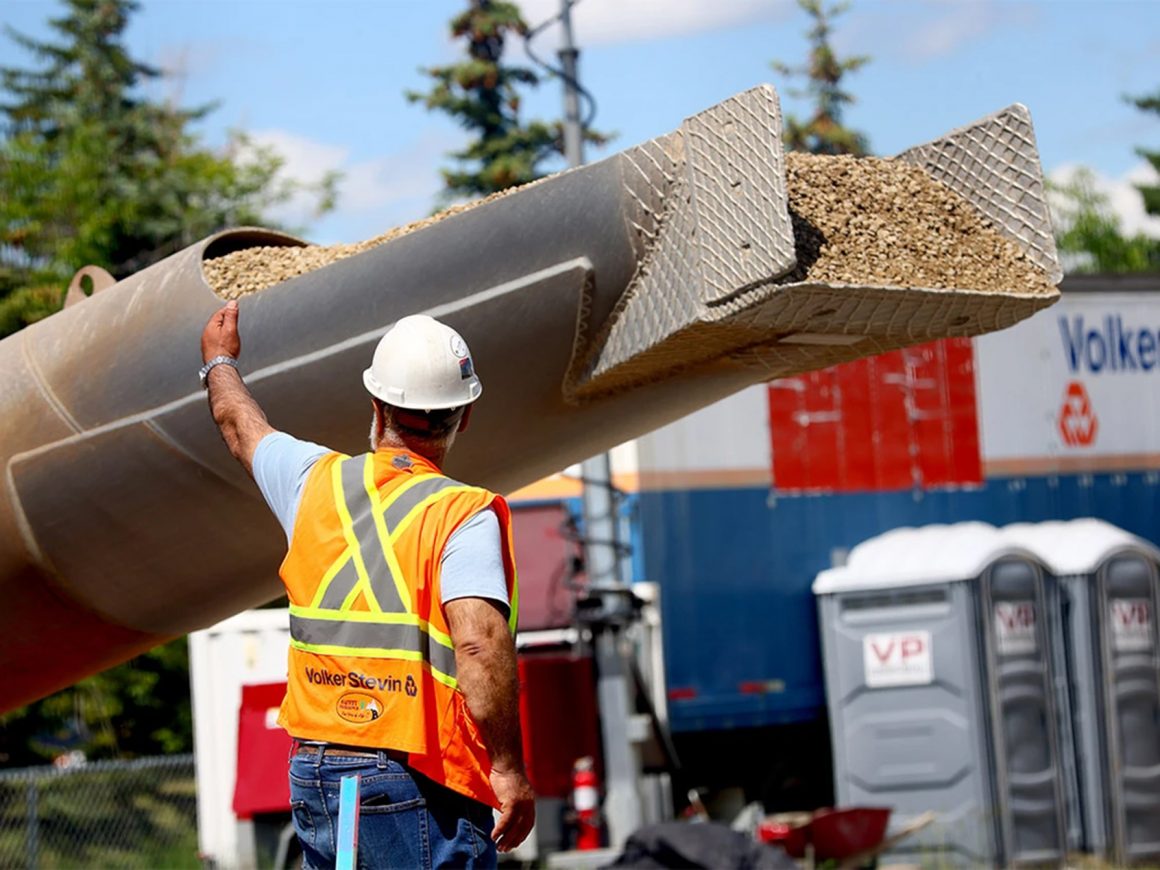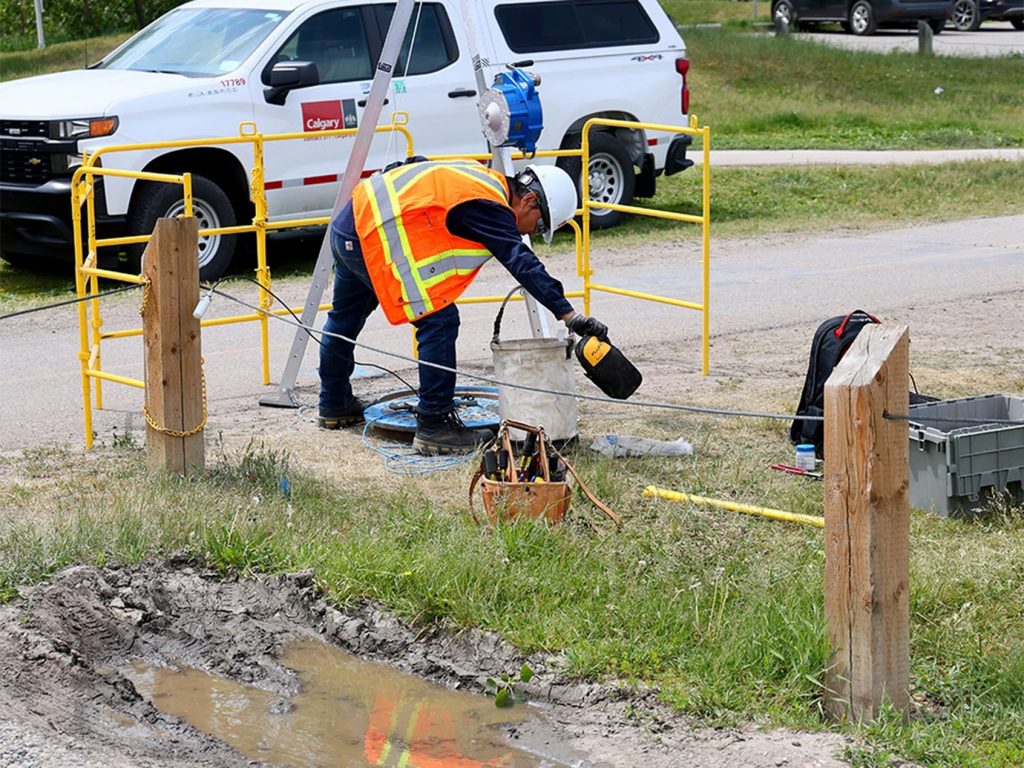
Ensuring safe water for all: Comparing Calgary’s short-term water crisis to the systemic water injustice of Indigenous people in Canada
By Reyam Jamaleddine, July 8 2024—
On June 5, 2024, the Bearspaw south feeder main ruptured. This critical pipe is responsible for transporting roughly 60 percent of the city of Calgary’s treated water supply from the Bearspaw Water Treatment Plant. The 11 km long feeder main transfers water to the eastern and southern areas of the city. The city was in a state of local emergency as roughly 1.3 million Calgarians in addition to the residents of Strathmore, Airdrie, Chestermere and the Tsuut’ina Nation were at risk of running out of water in their homes.
Given the damage of the largest water supply chain, the city was in water conservation mode where every drop counts. The idea of the city no longer being able to produce water in potential emergencies loomed over the almost two million people who rely on it. The city was under a stage four water restriction where residents were asked to reduce their water consumption by at least 25 percent. The easiest way residents can reduce their water usage is by halting all outdoor usage; therefore all outdoor water usage including gardening and washing cars was restricted and violators were subject to a 3,000 dollar fine. In addition to restrictions on water, there was also a fire ban in place.

Forty percent of Calgary’s water supply is sourced from the Elbow River into the Glenmore Reservoir. The Bow River which originates north of Lake Louise supplies the Bearspaw Water Treatment Plant which is the source for 60 percent of Calgary’s water source. These water sources and the land we reside on are located on the traditional territories of the people of the Treaty Seven region in Southern Alberta — many First Nations communities in Alberta have struggled to have access to clean water for years and have been largely ignored or mismanaged.
Currently, there are 30 long-term water advisories in effect in 28 Indigenous communities. Some of these long-term water advisories have been put into effect for over 20 years, including reserves such as Neskantaga First Nation. Currently, all water advisories put into effect in Alberta for First Nations have been lifted with the last one being in 2020 for the Kehewin Cree Nation.
In the face of the broader Calgarian struggle with maintaining our water supply, why has it taken decades to solve the First Nations water crisis, and why is it still continuing in some areas of the country? The feeder main break in Calgary is set to be resolved by July 5, 2024. This would restore and lift all water restrictions. The feeder main part was quickly ordered and delivered from San Diego, California and has now been set into the piping system making the possibility of water restrictions to be lifted even sooner than the July 5 deadline. The Calgary water crisis has been presumed and set to be solved within five weeks from the break, just ahead of the Calgary Stampede. It has taken the federal government decades to act on the lack of clean water to First Nations in Alberta, and it still has not taken action in several areas across the country.
The problem has been persistent and continues to be a problem for Indigenous peoples living on Indigenous land. The issue stems from the roots of colonialism where indigenous peoples were forced to relocate to areas where the water source was put under stress. First Nations communities are small and often remote, making them inaccessible by road. This puts these small communities at a much larger risk than that of larger municipalities.
The right to safe water and sanitation is recognized by the United Nations as a legal entitlement and not simply a commodity or charitable service. Resolving the water crisis on First Nations reserves requires increasing the budget for success or creating promises for effective change. For Indigenous peoples, water holds cultural and spiritual significance, making this crisis far more severe than just a health commodity. The need for clean water on First Nations land is a pronounced act of reconciliation. The Canadian government has persistently made promises to provide access to clean water on reserves and has consistently failed to achieve each promise that has been made for decades upon decades.
This brings us back to the city of Calgary and surrounding areas, where the water crisis is now set to be solved in less than five weeks just ahead of the world’s largest outdoor rodeo, the Calgary Stampede. This begs the question: if the pressure of hosting one of the city’s largest events in the upcoming weeks was dependent on First Nations reserves, would that have encouraged acting upon and immediately fixing the issue of lack of clean water for Indigenous peoples? Is access to safe water only important when profits are at stake?
As students and as individuals living on Indigenous land, it is our responsibility to educate ourselves and continue to be aware that there are people among us, residing in the country that holds 20 percent of the world’s freshwater, who have no access to safe and clean water. It is our responsibility to advocate and push for promised policies to be implemented and effective. So this Stampede, as our festivities continue and the brief water crisis we face is resolved, ensure that you keep in mind that there are others who never had their water crisis resolved and may never if we aren’t noticing systemic injustices.
This article is a part of our Voices section and does not necessarily reflect the views of the Gauntlet editorial board.
